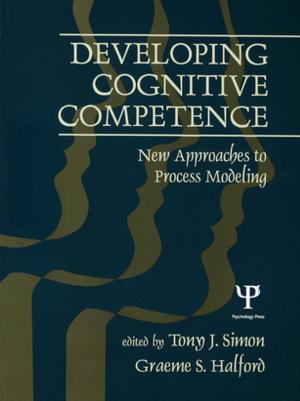Handbook of Psychological Treatment Protocols for Children and Adolescents
Nonfiction, Health & Well Being, Psychology, Clinical Psychology, Mental Health| Author: | ISBN: | 9781135693015 | |
| Publisher: | Taylor and Francis | Publication: | March 1, 1998 |
| Imprint: | Routledge | Language: | English |
| Author: | |
| ISBN: | 9781135693015 |
| Publisher: | Taylor and Francis |
| Publication: | March 1, 1998 |
| Imprint: | Routledge |
| Language: | English |
In the last decade, mental health professionals have been under mounting pressure to demonstrate the cost effectiveness of their treatment choices and practices. Progress has been made, related in part to improvements and refinements in diagnostic classifications that are increasingly empirically determined and behaviorally based. Historically, however, research on the treatment of children and adolescents has lagged behind research on the treatment of adults. The growing realization that early intervention can prevent serious psychological dysfunction in adulthood has stimulated much more interest and attention in recent years, and a number of innovative and efficacious treatment strategies have been developed.
But most of these are not widely known outside the contexts of the major research programs in which they originated and were tested. Complete protocols have rarely been disseminated or replicated; descriptions are typically embedded in the "methods" sections of journal articles or briefly given in chapters of volumes addressing a diversity of problems.
The Handbook of Psychological Treatment Protocols for Children and Adolescents is the first attempt to bridge this gap between clinical research and practice. Drawing together systematic, empirically-based guidelines for accountable clinical work with children and adolescents with varying presenting problems, it is a compendium of state-of-the-art treatment manuals. Specific instructions and relevant case illustrations facilitate the practitioner's efforts to replicate the approaches.
The Handbook will be welcomed by a wide range of mental health professionals and their students.
In the last decade, mental health professionals have been under mounting pressure to demonstrate the cost effectiveness of their treatment choices and practices. Progress has been made, related in part to improvements and refinements in diagnostic classifications that are increasingly empirically determined and behaviorally based. Historically, however, research on the treatment of children and adolescents has lagged behind research on the treatment of adults. The growing realization that early intervention can prevent serious psychological dysfunction in adulthood has stimulated much more interest and attention in recent years, and a number of innovative and efficacious treatment strategies have been developed.
But most of these are not widely known outside the contexts of the major research programs in which they originated and were tested. Complete protocols have rarely been disseminated or replicated; descriptions are typically embedded in the "methods" sections of journal articles or briefly given in chapters of volumes addressing a diversity of problems.
The Handbook of Psychological Treatment Protocols for Children and Adolescents is the first attempt to bridge this gap between clinical research and practice. Drawing together systematic, empirically-based guidelines for accountable clinical work with children and adolescents with varying presenting problems, it is a compendium of state-of-the-art treatment manuals. Specific instructions and relevant case illustrations facilitate the practitioner's efforts to replicate the approaches.
The Handbook will be welcomed by a wide range of mental health professionals and their students.















